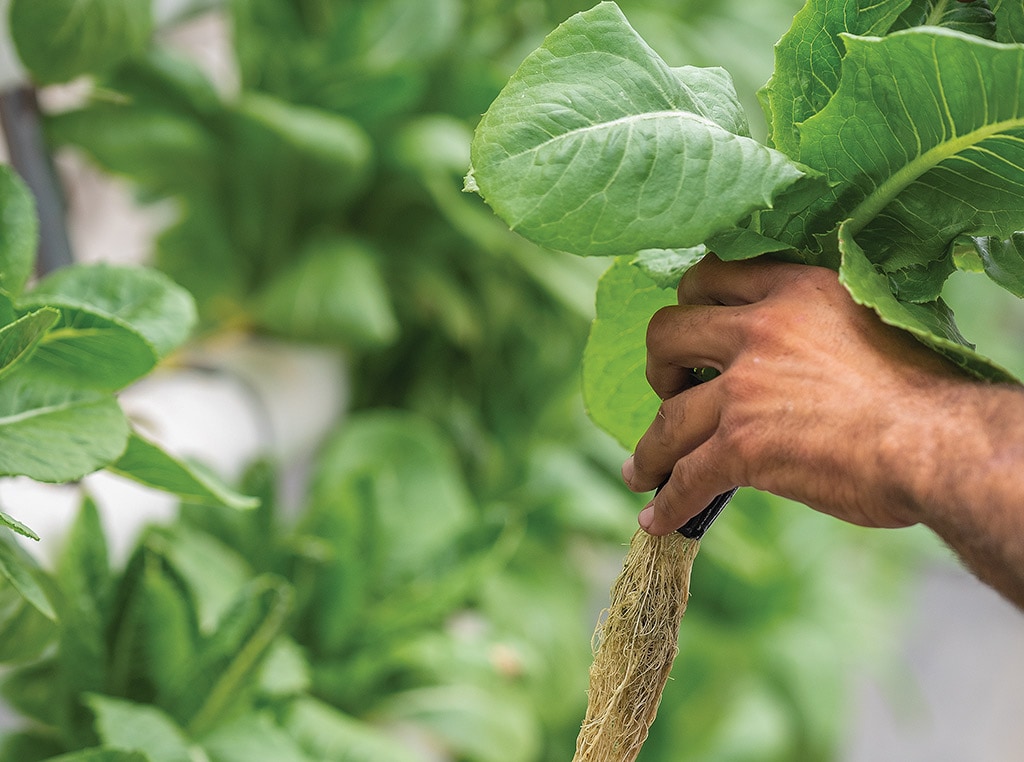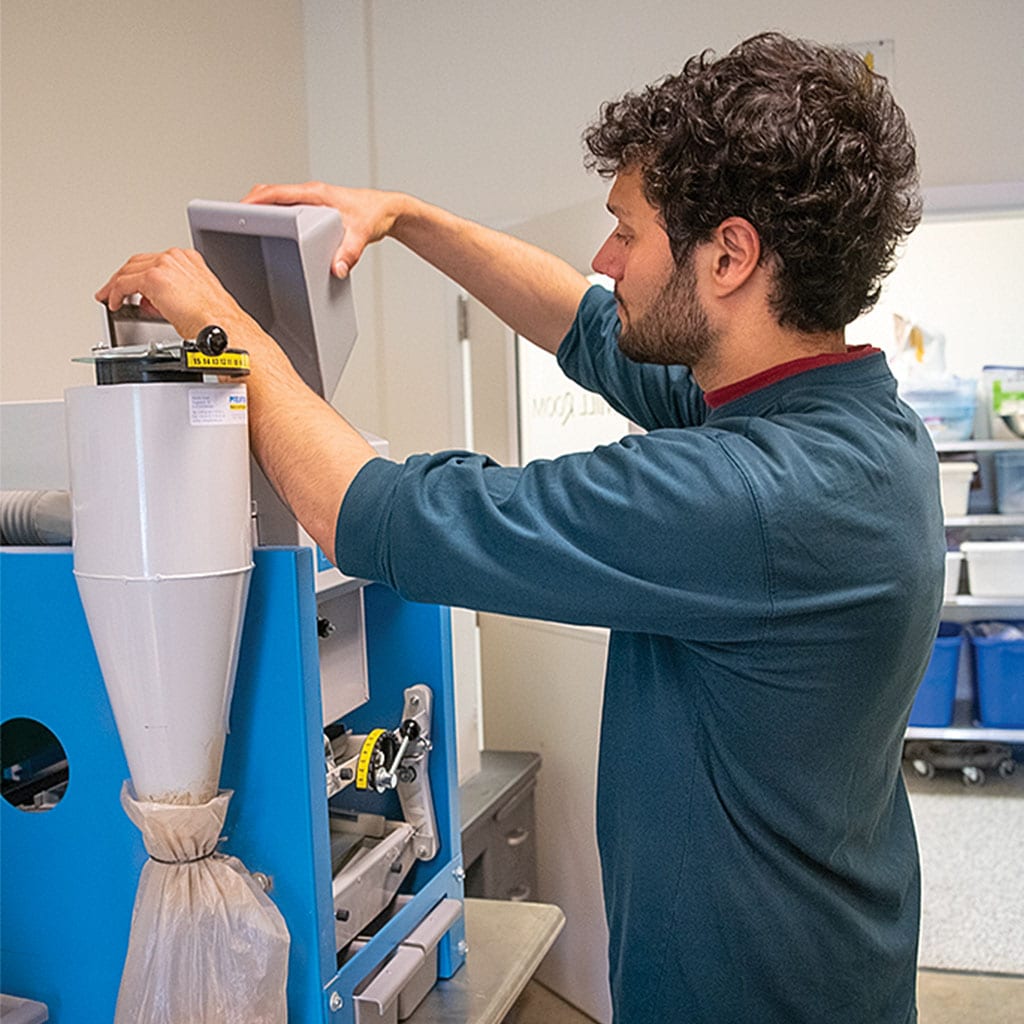
Colored compounds in wheat varieties like the sample at left may impart more nutrients and flavor. PhD student Louie Prager co-owns a California bakery and breeds colored barley for malting. Merri Metcalfe's PhD research focuses on developing more nutritious grains and encouraging whole grain use—"such an opportunity to improve our health," she says.
Agriculture, Education December 01, 2022
Small Grains, Big Questions
.
WSU Breadlab researchers tackle opportunities for cereals.
Wheat and other cereal grains are such staples that they stand as a sort of shorthand for "food" - so common most of us take them for granted. In Burlington, Washington - not the semi-arid, wheat-growing part of the state, but the drizzly, coastal Skagit Valley, where wheat was pushed aside more than a century ago by more valuable crops - a group of dynamic grad students and their mentors at Washington State University's Breadlab are questioning the wheat world's status quo.
"When we develop new plants, we can ask certain questions," says PhD candidate Robin Morgan, a wheat breeder. "Why does wheat need to be red or white? Why can't it be blue? Why do we say wheat has to have a certain level of protein to be good for baking bread? If our focus is on nutrients like iron or zinc, why do we throw them away with the bran?"
As Morgan talks with two of his fellow Breadlab PhD students, dietitian Merri Metcalfe and California bakery owner Louie Prager, more questions arise.
What should the target attributes for a wheat or barley variety be? Does every wheat variety have to fit into the existing commodity system? How are environmental goals woven into breeding? How can a small investment in making whole grains accessible reduce the massive costs of diet-related diseases like diabetes and heart disease? How can regional cereal production enhance resilience of farmers and their communities?
These aren't late-night student musings. And they're not small questions. They're the sort of out-of-the-bin thinking that drives Breadlab research. The bottom line is a deep belief in the power of whole grain products. All the nutrients. All the flavor. And none of the waste of white flour milling.
"We believe strongly that we need to use the whole grain, always, for planetary reasons and nutritional reasons," Metcalfe says.
Founded in 2011 by WSU researcher Stephen Jones, the Breadlab is at once very local and completely global in its outlook.
On one hand, it focuses on developing varieties of wheat, barley, and rye that grow well in western Washington, and stimulating infrastructure and markets that can drive the region's economy.
That innovative regional work quickly gained a national audience, including artisan bakers as well as corporations like Chipotle and Clif Bar eager to expand into whole wheat. It has spurred a project called the Approachable Loaf, an open-source sandwich bread recipe that any baker can produce to bring the flavor and nutrition of whole wheat to customers. And it's challenged bakers to consider what they really want in flour.
Diverse projects. Morgan is working with wheat breeder Steve Lyons on developing perennial wheat and richly colored, deeply flavored, highly nutritious wheat.
Salish Blue, a new variety from the Breadlab, is a combination of the two efforts - a cross of perennial wheatgrass and annual wheat that can be grown for years, improving soil quality and yielding flavorful, deeply colored kernels prized by artisan bakers.
"Farmers are not having to choose between food today and soil tomorrow," he says.
Prager is breeding colored barleys for the malting industry. As a baker, he was a long-time attendee of Breadlab's Grain Gathering, so he also keeps a close eye on the Approachable Loaf. He is a big proponent of regional food systems.
"If there were more regional systems, what's going on in Russia and Ukraine wouldn't affect us nearly as much," he notes.
Metcalfe is trying to increase wheat's fiber content and inspire more whole wheat use. It's a pressing need, she notes: 94% of Americans do not meet their daily dietary fiber needs. It also illustrates how Breadlab's answers tie together the production, processing, and consumption of grains.
"We can help bakers, millers, and consumers understand this benefits them, and how whole grains can benefit every member of the grain chain," she says. ‡
Read More

AGRICULTURE, FARM OPERATION
Water in the End Rows
Next generation builds hydroponic greenhouse in parents' field.

AGRICULTURE, FARM OPERATION
Fast Feed
Ingenious self-serve bar streamlines winter feeding.

